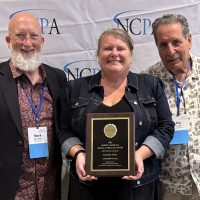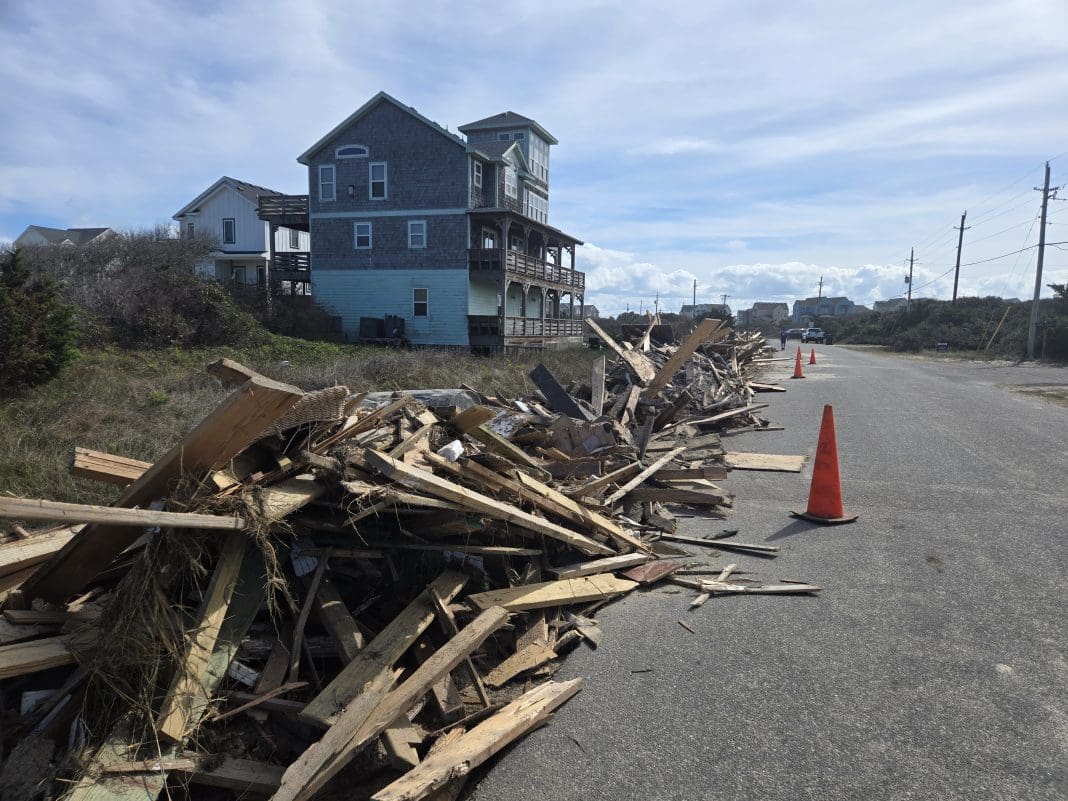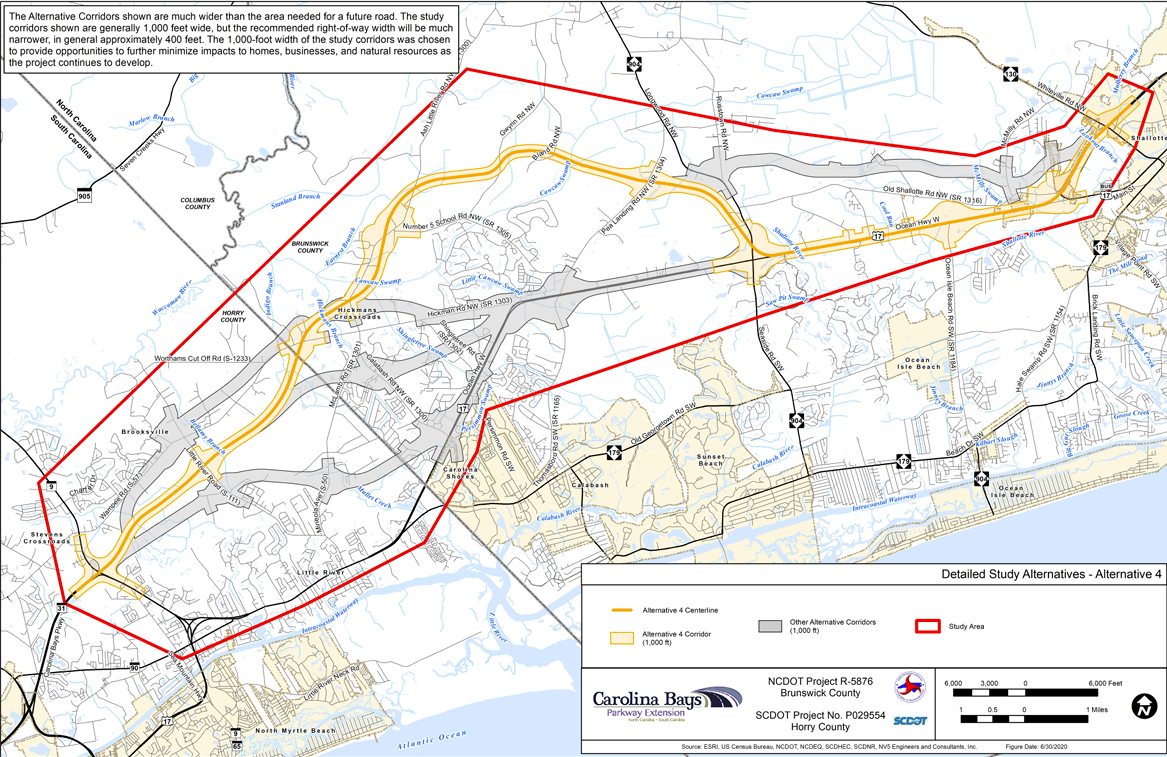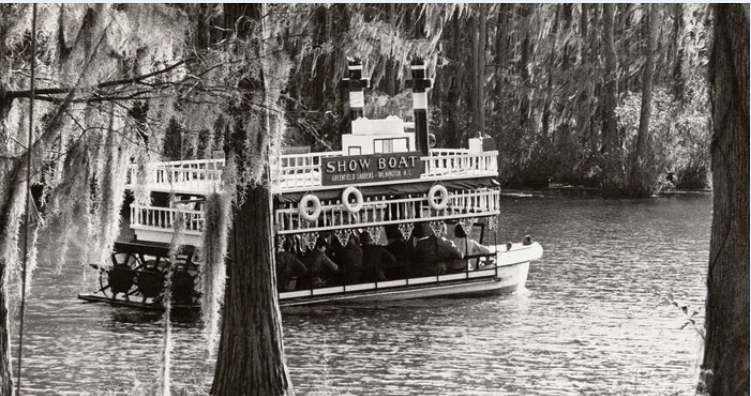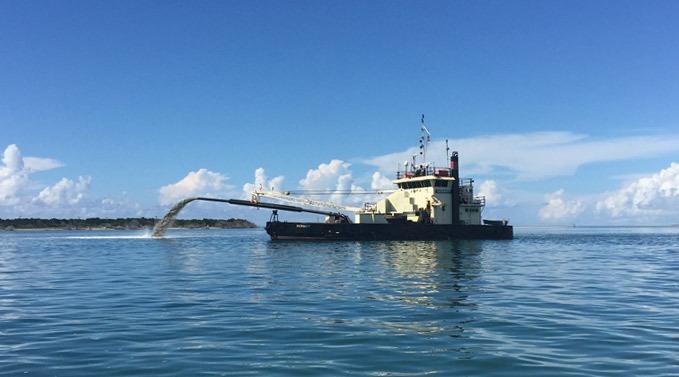
Reprinted from Island Free Press
Chronic shoaling in Hatteras Inlet’s South Ferry Channel persists despite numerous dredging projects over the last five years, but now the Dare County Waterways Commission is facing a tough decision on how to proceed in the face of stubbornly intractable issues.
Supporter Spotlight
Before the sidecaster dredge Merritt’s scheduled return Oct. 1, the panel has to decide whether the two-week project would be a waste of time and money. Member K.P. Scott, who runs the Miss Hatteras headboat, said he doesn’t believe the sidecaster would even be able to do the work.
“I’m ready to shut down my operation after this week,” Scott said. “It’s getting that bad. And I’m hauling a hundred people through there a day. So it’s going to hurt. We’ve got to find a route.”
Conditions have gotten so treacherous that even the Coast Guard’s 47-foot patrol boat can only go out at high tide, said commission Chair Steve “Creature” Coulter in a later interview.
“It’s as bad as it’s been since the spring,” he said, adding that local vessels are still able to inch their way in and out. “But we’re starting to bump.”
Coulter said that the Merritt was clearing the channel during a project in July when it was called away after one day for an emergency project. Then when it came back last month, it was only able to work a half day at high tide for three days before it had to leave.
Supporter Spotlight
In a detailed presentation to commissioners at the Monday, Sept. 13, virtual meeting, the county’s consultant Ken Willson, with Wilmington-based Coastal Protection Engineering, reviewed projects done in the South Ferry Channel by U.S Army Corps of Engineers’ dredges since 2017 to address different areas of shoaling within the permitted parameters, with the goal of finding best water and maintaining a sufficiently wide and deep channel. But with recent work proving futile against renewed shoaling, effective options, at least for the time being, are limited.
“Understanding what the situation was when we last tried to dredge across that northern connector channel,” he told the commission, “it didn’t last very long, that northern route. But certainly the route we’re working in here has its limitations because on either side of that channel, the depths are so shallow that the Corps may not be able to even if they want it open.”
Among the numerous complexities that have frustrated all involved in maintaining the South Ferry Channel — missing permits, bad weather, seasonal work windows, broken dredges, funding restrictions — the latest seems especially challenging.
The Corps’ only available dredge, the Merritt, is a sidecaster that basically scoops out the shoal and tosses the sand to either side. But if the disposed material builds up along the side and starts peeking up through the water, the operators by law must stop working.
That’s what had happened in the last attempt, Willson said. And because of the lack of current on that side of the channel, it is likely to happen again.
“So we are in a difficult situation,” he said.
The hopper dredge Currituck, which can remove material and haul it off for disposal away from the work area, will be in the shipyard until at least the fall of 2022. Due to maintenance and scheduling commitments, the hopper Murden will also likely be unavailable until 2022.
Todd Horton, with the Corps, said operators are hesitant to retry dredging older routes that have shoaled because of the risk of damaging the dredges.
Earlier, Coulter had suggested looking into extending the channel to the northwest. Although Willson didn’t dismiss the possibility, he cautioned that it would extend beyond the current “red box” delineated in the permit. That would require additional surveys.
“It’s certainly something that’s do-able, but it’s not something that’s going to happen fast,” he said.
In the meantime, the Merritt is scheduled to return to the location in October to do additional dredging, unless the commission decides otherwise.
Coulter said that he has serious doubts that the Corps could work in such a shallow area for more than a few days, and he is concerned that the funds provided by the state and the county for the project would be wasted.
“That’s not a channel, for one thing,” he told Willson. “It’s a ditch … They’re not going to be able to side cast for two weeks there. They’re just not going to be able to.”
Responding, Willson said he didn’t disagree, but he said that the agencies need to know by Oct. 1 “some sort of game plan of what we’re targeting.”
The commission agreed to request a new survey of the proposed channel extension at the western end, and then meet again as soon as possible in a special meeting to discuss the options.
Still, no matter what the commission decides in the coming weeks, the Hatteras boat captains and commercial fishers will be crossing their fingers that conditions don’t worsen before a better channel and/or better dredging are secured.
“So we’re stuck,” Coulter said in the interview. “The fact that the Coast Guard can’t go at low tide is enough that somebody should do something.”
This story is provided courtesy of the Island Free Press, a digital newspaper covering Hatteras and Ocracoke islands. Coastal Review is partnering with the Free Press to provide readers with more environmental and lifestyle stories of interest along our coast.

